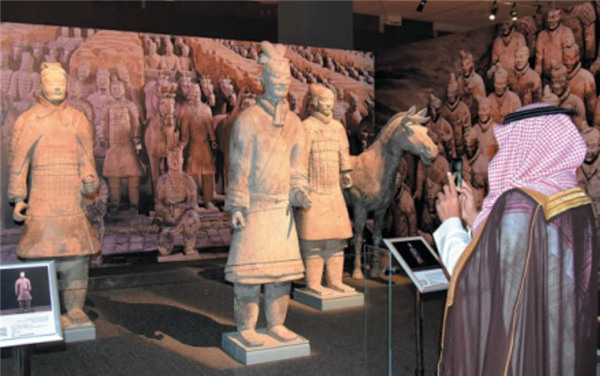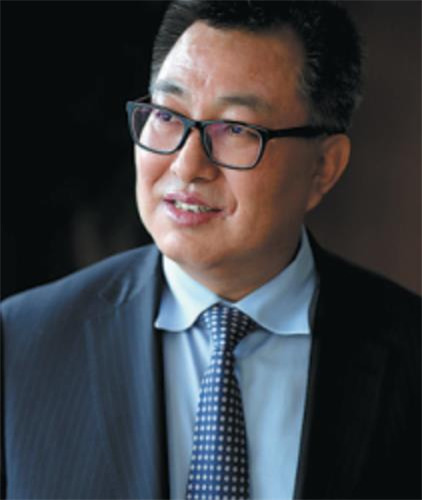 |
|
A visitor takes photos at Treasures of China, the largest exhibition of Chinese cultural relics in the history of the Arabian Peninsula, in Riyadh, capital of Saudi Arabia. [Photo by Tu Yifan/Xinhua] |
Networks
Sending exhibitions to tour overseas has become a common way for Chinese museums to display the country's brilliant civilization.
Nearly 300 exhibitions of cultural relics have been taken overseas since 2013, according to the National Cultural Heritage Administration. There were 44 last year alone.
From September to November, an exhibition called Treasures of China visited Riyadh, capital of Saudi Arabia.
The show, drawn from more than 200 collections in 13 institutions, represented the largest exhibition of Chinese cultural relics in the history of the Arabian Peninsula.
Last year, more than 120 Terracotta Warriors and other artifacts dating back 2,000 years were displayed in Liverpool, England.
More opportunities for cooperation between museums in China and overseas have emerged as a result of the adoption of new formats.
For example, the International Alliance of Museums of the Silk Road and the BRICS Alliance of Art Museums and National Galleries were established last year, enabling more frequent exchanges between national museums in related countries.
 |
|
Wang Chunfa, director of the National Museum of China and a member of the National Committee of the 13th CPPCC. [Photo provided to China Daily] |
"These alliances explore a new way for institutions from different countries to stage cooperative exhibitions and nurture expertise together," said Wang Chunfa, director of the National Museum of China and a member of the National Committee of the 13th CPPCC.
He noted that the new alliances have made a number of surprising discoveries, such as the recognition that some of the relics in the National Museum in New Delhi, India, originated in Dunhuang, an old city in Gansu province that was a well-known hub on the ancient Silk Road.
The relics have never been exhibited publicly, but thanks to the new alliances they will soon be displayed in several countries to reflect the prosperous history of the ancient Eurasian trade route.
"Chinese cultural relics reflect the thoughts, morals and humanity of our nation," Wang Chunfa said. "These traditions can offer important reference points for all human beings."
Despite that, some experts claim that it is not enough to simply showcase antiques.
"If we just display cultural relics from ancient times, overseas audiences still feel detached sometimes," said He Yun'ao, a professor from the School of History and Archaeology at Nanjing University in Jiangsu province and a member of the National Committee of the 13th CPPCC.
"Stories need to be better told through multiple forms," he said. "The exhibits need to be connected with modern China, so people overseas will better understand the country today."
To that end, the Palace Museum has made a number of moves.
For example, many replicas developed from relics have gained popularity in China. In response, the museum has organized a touring exhibition of these replicas.
The expo is visiting Tokyo, Sydney, Brussels, Seoul and other cities worldwide to illustrate how modern creativity can introduce traditional cultures to new audiences.